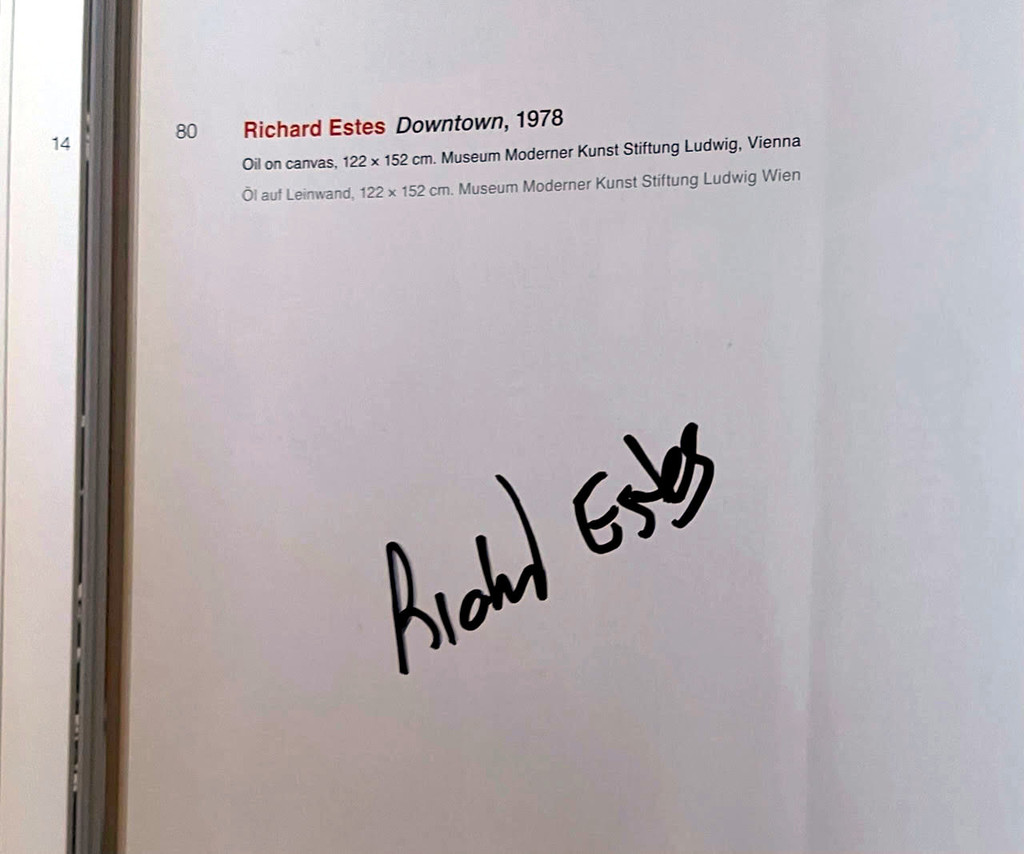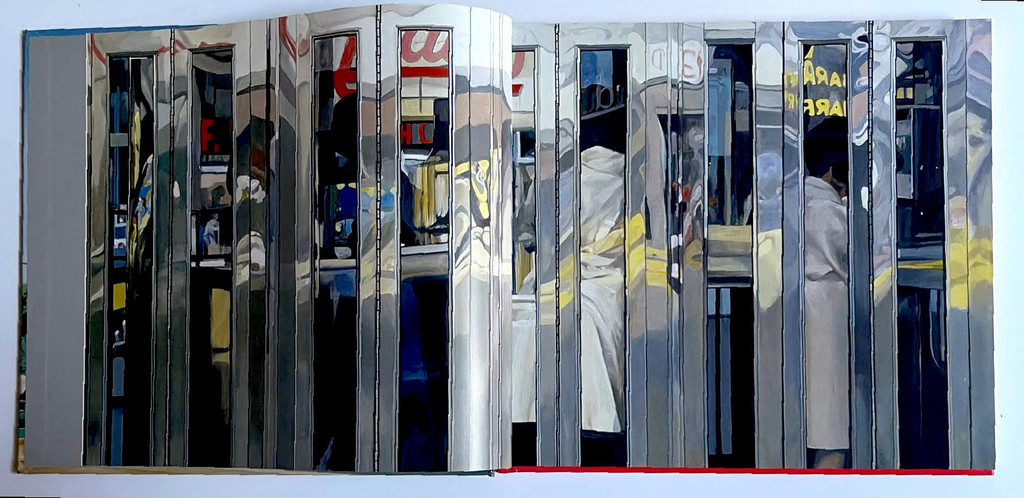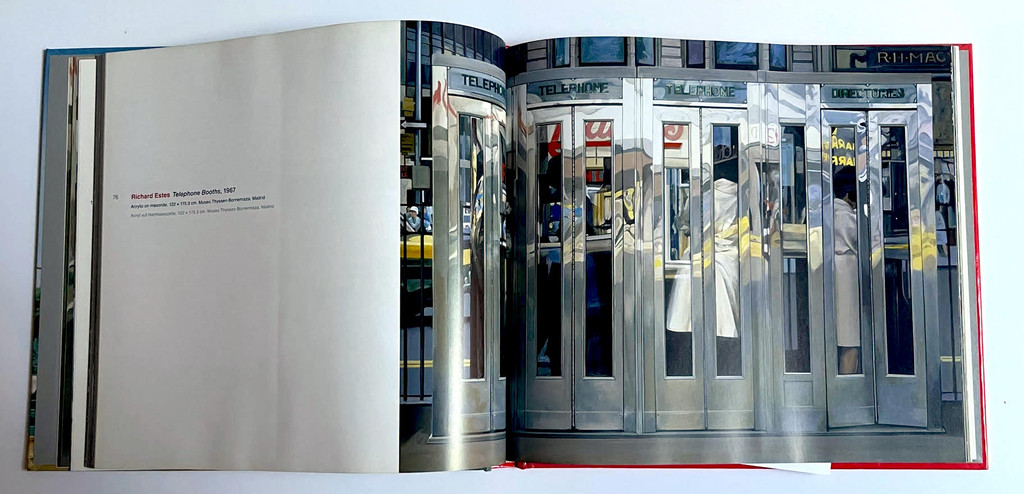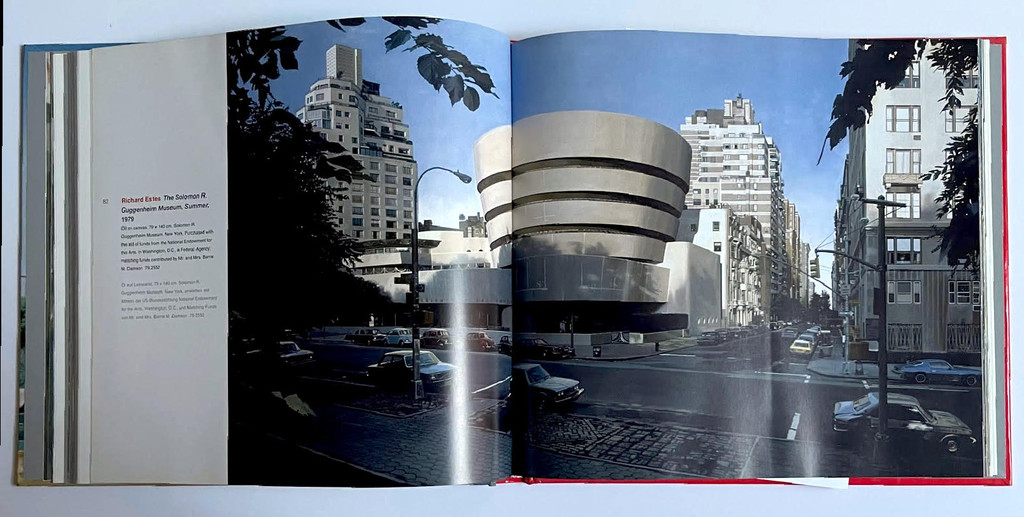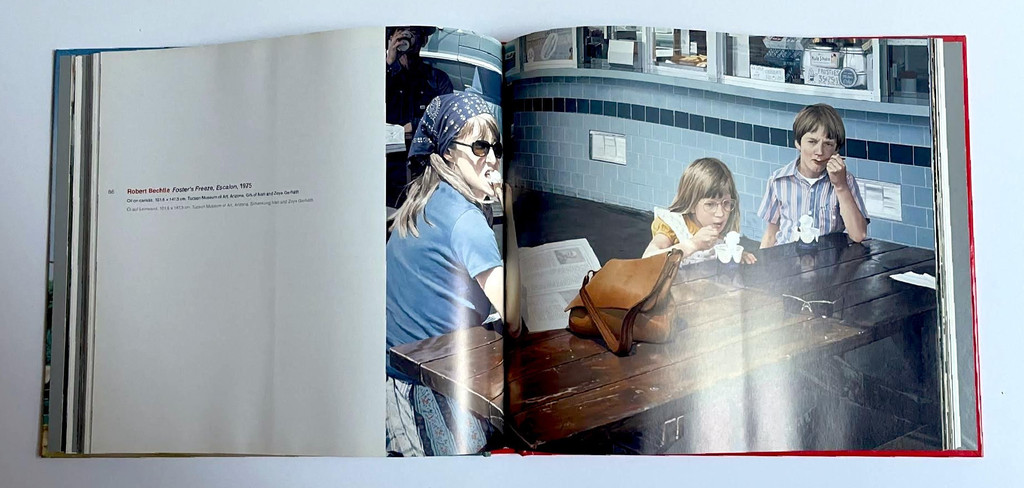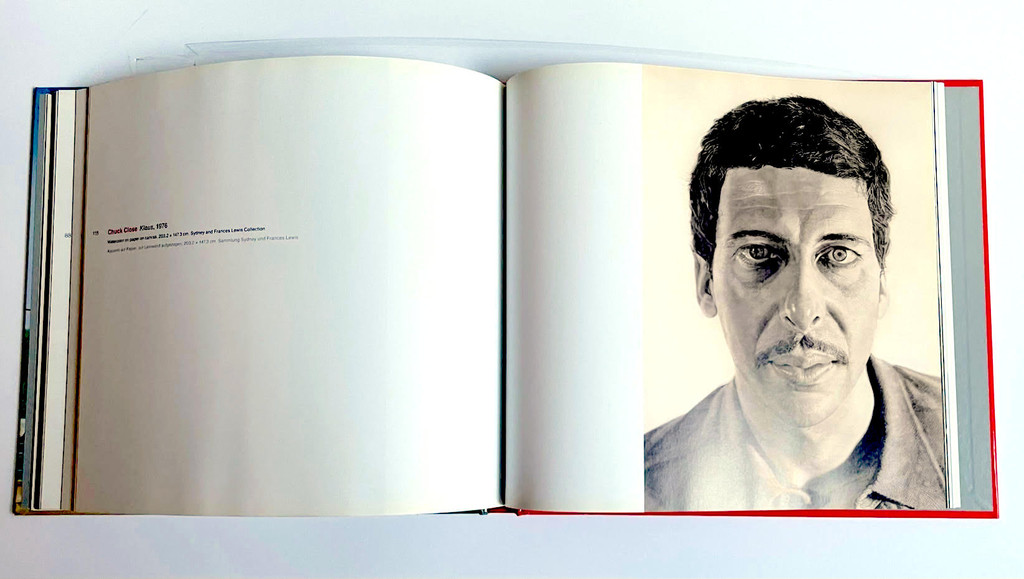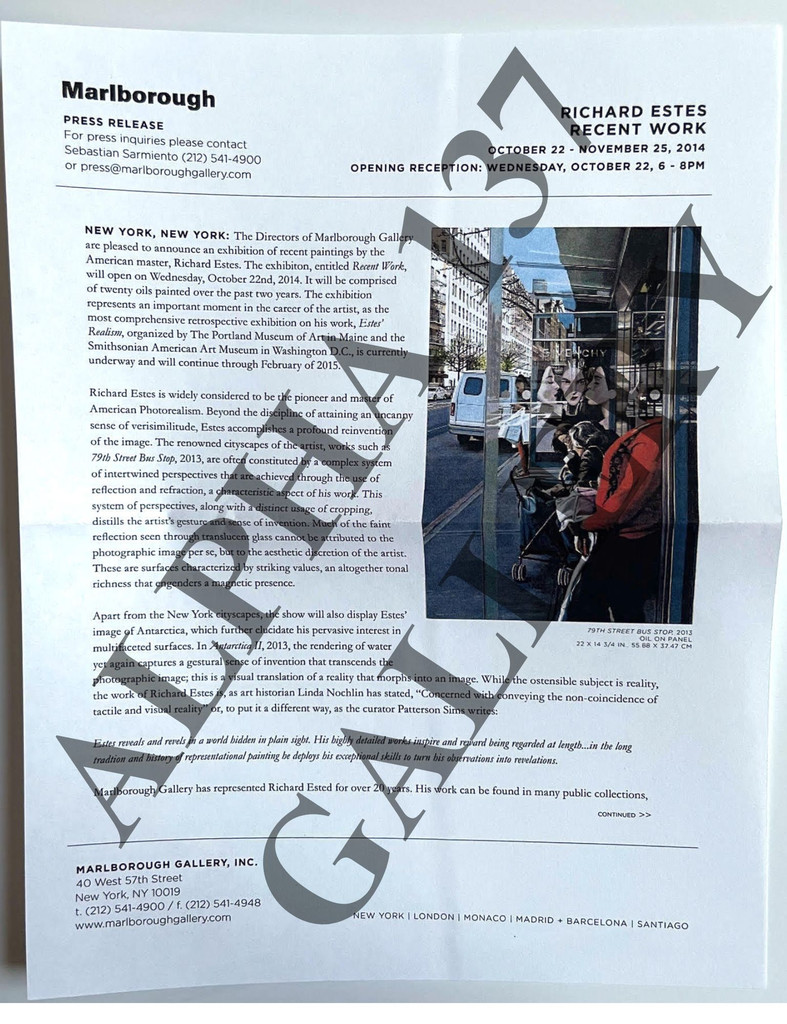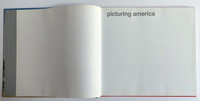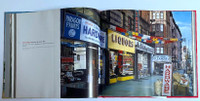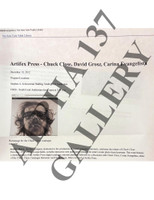
An Educated Collector is Our Best Client
In business for nearly two decades, we are a well established, popular contemporary art boutique specializing in expertly chosen, blue chip prints, multiples, uniques, books, ephemera and merchandise at different price points, with a focus on the secondary market. Please click on the "Contact Us" button at the bottom of this page for questions about any work, pricing and/or to arrange to visit our showroom/gallery - located in between Manhattan's Flatiron and Chelsea Flower Districts.
Chuck Close, Richard Estes, Picturing America (hand signed by both Chuck Close and Richard Estes), 2009
CONTACT GALLERY FOR PRICE
Description
Chuck Close, Richard Estes
Picturing America (hand signed by both Chuck Close and Richard Estes), 2009
Hardback Monograph (hand signed by Chuck Close and Richard Estes)
Boldly signed by Chuck Close and Richard Estes
9 1/4 × 10 × 1/2 inches
Unframed
We have not seen another hand signed by both Chuck Close and Richard Estes anywhere else in the world - ever. And none with such fine provenance: This highly collectible monograph was hand signed by Chuck Close for the present owner at a special event held by Artifex Press held at the New York Public Library; then signed by Richard Estes at his retrospective at the Museum of Design in New York
Published on the occasion of the exhibition Picturing America: Photorealism in the 1970s/Picturing America: Fotorealismus der 70er Jahre.
The book was signed for the present owner by Chuck Close at Artifex Press held at the New York Public Library on December 19, 2012, and by Richard Estes at the Museum of Design.
About the monograph, which itself is a collectors item:
Title: Picturing America
Publisher: Deutsche Guggenheim, 2009
Hardcover, 176 pp. replete with full-color images of the photorealistic work of some of the most celebrated names in American realism painting in the 1970s including Robert Bechtle, Ralph Goings, Audrey Flack, Chuck Close, John Salt, Richard Estes, Tom Blackwell, Robert Cottingham, Don Eddy, Charles Bell, Ron Kleemann, Ben Schonzeit, Richard McLean, Malcom Morley, Franz Gertsch, Stephen Posen, and Paul Staiger. Bilingual text in GERMAN and ENGLISH.
About Chuck Close:
Chuck Close is known for his innovative conceptual portraiture, depicting his subjects, which are transposed from photographs, into visual data organized by gridded compositions.
Throughout his childhood and adolescence, Close used art as a means of navigating a learning disability. He continued to develop his artistic skills through private art lessons, drawing and painting from live models. As a student at the University of Washington (BA, 1962), and then at Yale (BFA 1963; MFA 1964), he began to emulate the styles of Arshile Gorky and Willem de Kooning, considering himself a third-wave Abstract Expressionist and as he explored this vocabulary he pivoted from biomorphism to figuration.
After studying at the Akademie der Bildenden Künste in Vienna (1964) on a Fulbright grant, Close returned to the United States in 1965. He taught painting at the University of Massachusetts, Amherst, where he received his first solo exhibition in 1967. Seeking to break from the gestural style that had characterised his student work, Close shifted toward Pop-inflected figuration before embracing the tools of commercial art and illustration. Basing his paintings on photographic imagery, Close reduced his palette to black and white, culminating in his large-scale painting Big Nude (1967). His 1967 solo exhibition featured paintings of male nudes, proving controversial and ultimately resulted in a landmark court case that sought to extend freedom of speech to the visual arts.
On relocating to New York, Close continued to explore realism, painting black-and-white photographic portraits of his family and friends onto large-scale canvases in precise detail, applying paint with an airbrush. He participated in his first New York exhibition in 1970 at Bykert Gallery alongside Lynda Benglis and Richard Van Buren. During this time, the Walker Art Center, Minneapolis, acquired Big Self Portrait (1967) directly from his studio. Close relinquished his strictly monochromatic palette in 1970 and began employing a three-color process as well as various imposed systems and techniques. A year later he received his first major museum exhibition Recent Work at the Los Angeles County Museum of Art (1971).
Exploring different modes of representation, Close began in the late 1970s to make explicit use of a grid system or an irregular grid based on a physical relationship to his support. The resulting works read like pixelated mosaics wherein the viewer’s perception blends distinct areas of juxtaposed color—be it layered shapes of colors, fingerprints, or lines—into a unified image.His first retrospective Close Portraits was organized by the Walker Art Center, Minneapolis in 1980, and traveled to the St. Louis Art Museum, Missouri; Museum of Contemporary Art, Chicago; closing at the Whitney Museum of American Art. In 1988, Close was paralyzed following a rare case of spinal artery collapse. Through rehabilitation, he regained his ability to paint by using a brush-holding device strapped to his wrist and forearm. Beginning in 1991, he continued his examinations of portraiture through productions of silk tapestries and, since 2003, has furthered this investigation, producing editions of large-scale Jacquard tapestry portraits.
Constantly revitalizing his practice by challenging modes of representation, Close’s oeuvre encompasses various forms of painting, printmaking, drawing, collage, daguerreotype and Polaroid photography, and, most recently, tapestries.
Courtesy of Pace Gallery
About Richard Estes:
Richard Estes (b. 1932, Kewanee, Illinois) is the artist most commonly associated with Photorealism. He began painting cityscapes in this style in the late 1960s, using multiple source photographs to composite his paintings. Initially, he focused on the Upper West Side of New York City, but has since travelled the world and depicted numerous cities. More recently, his subject matter has expanded to include landscapes. Since 1966 Estes has produced approximately 400-500 paintings. His works are held in notable museum collections including Whitney Museum of American Art and The Solomon R. Guggenheim Museum in New York City.
Courtesy of Louis K. Meisel Gallery
Provenance:
Signed by Chuck Close for the present owner at a special event held by Artifex Press held at the New York Public Library; then signed by Richard Estes at his retrospective at the Museum of Design in New York



